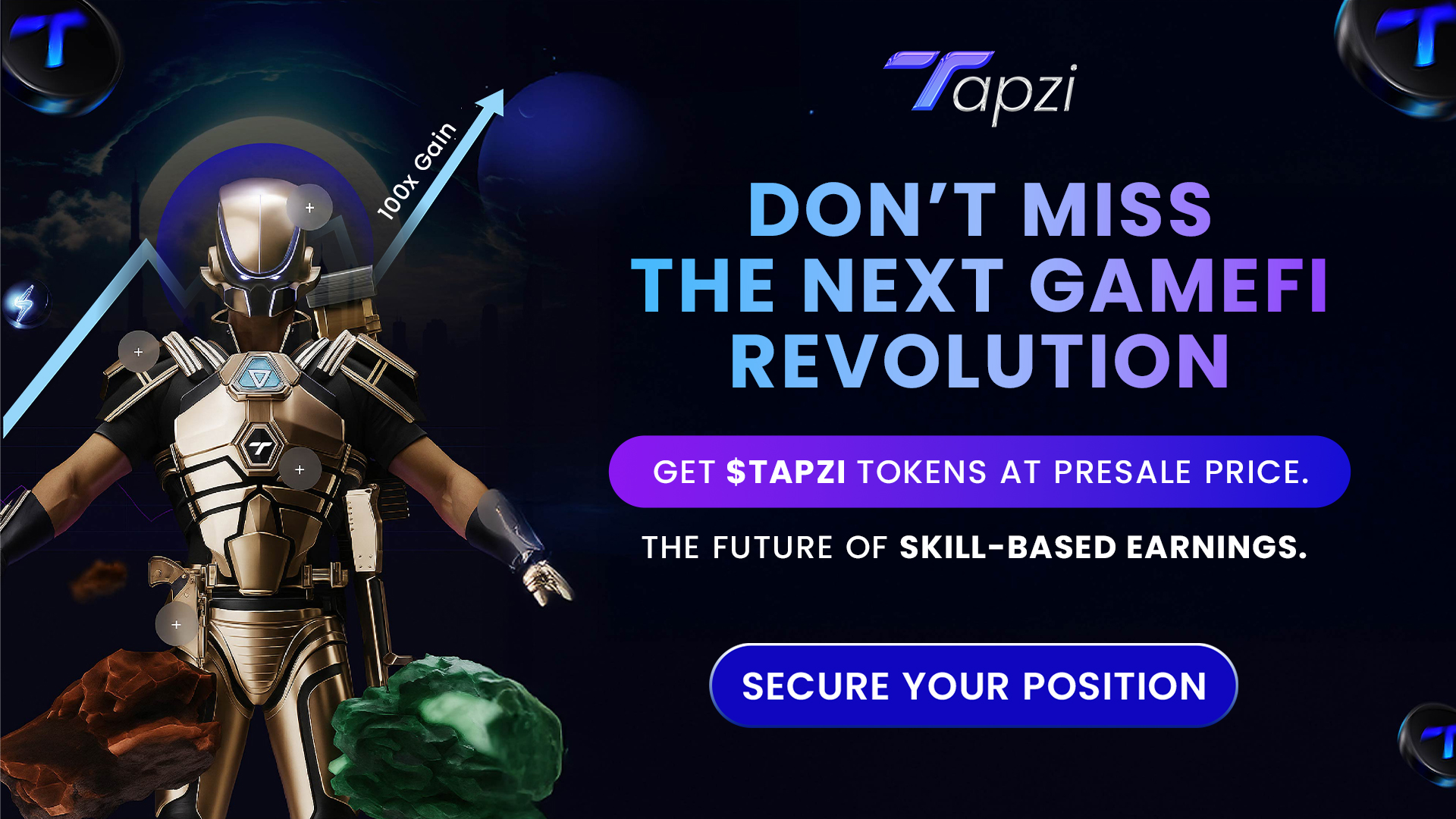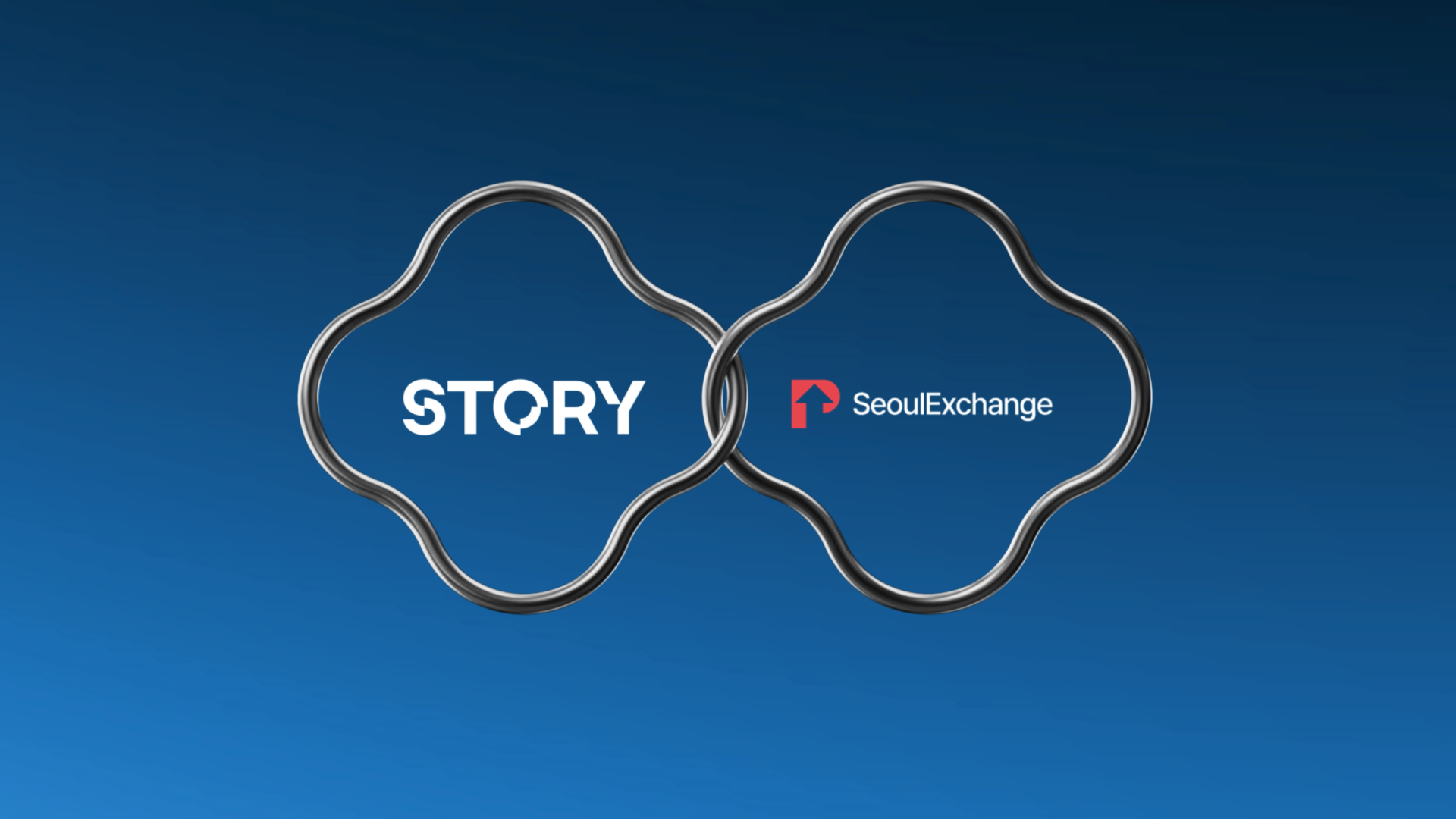Best Crypto to Buy Now (2025): Top 10 Coins and Emerging Tokens to Watch



The search for the best crypto to buy now is more competitive than ever. With markets reacting in real time to breaking news, innovation, and global trends, tokens that seem promising one week can fall behind the next, while newer projects quietly gain steam under the radar. One such project is Tapzi, a Web3 gaming platform where skill, not luck, determines rewards. Tapzi combines competitive, skill-based PvP games with fair tokenomics, anti-cheat systems, and cross-chain accessibility.
In this rapidly evolving space, focusing only on price performance isn’t enough. It’s about tracking which projects are delivering real utility, strong development momentum, and growing community support. Whether you’re assessing established blockchains or scouting early-stage tokens, understanding what makes a strong crypto project is essential.
Below, we’ve curated a list of the top 10 cryptocurrencies to consider buying now, based on market traction, development progress, and long-term potential.
The Best Cryptocurrencies to Buy in 2025: Top 10 Picks
Tapzi ($TAPZI)
In a world where GameFi has often been dominated by luck-based mechanics, endless grinding, and inflationary rewards, Tapzi stands apart by reimagining Web3 gaming around skill. Rather than rewarding chance, bots, or idle play, Tapzi introduces a competitive, skill-to-earn ecosystem where the better player always wins.

Secure Your $TAPZI Tokens Now – Click Here to Visit the Presale Page!
At its core, Tapzi transforms classic games like Chess, Checkers, and Rock-Paper-Scissors into blockchain-powered arenas with real economic stakes. Players stake the native $TAPZI token to enter PvP matches, compete in fair, ELO-based tournaments, and instantly claim rewards from player-funded prize pools. No randomness, no inflated emissions, just pure competition and transparent tokenomics.
Several features make Tapzi one of the most compelling crypto projects to consider right now:
- Skill-Based Rewards: Victory depends only on player ability, backed by AI-powered anti-cheat systems.
- Sustainable Tokenomics: Prize pools are player-funded, avoiding inflationary emissions that plague most GameFi models.
- Cross-Chain & Mobile-First: Seamless access across Ethereum, BNB Chain, Polygon, Arbitrum, Solana, and any device, no downloads required.
- Utility-Driven $TAPZI Token: From match entry and ranked tournaments to premium features and staking, $TAPZI powers the full ecosystem.
-
Launchpad for Developers:
Beyond gaming, Tapzi serves as a platform for studios to build and publish their own Web3 skill-based titles.
At its heart, Tapzi isn’t about speculative hype; it’s about fairness, competition, and building a sustainable skill-driven economy in Web3. For those looking at the best crypto to buy now with real-world gaming utility, Tapzi offers an early-mover advantage in a space ready for disruption.
Dogecoin ($DOGE)
Dogecoin (DOGE) began as a joke but quickly became one of the most recognizable names in crypto. Launched in 2013 and inspired by the viral Shiba Inu “doge” meme, it was meant to be a lighthearted alternative to Bitcoin, appealing to a broader and more casual audience. What started as satire has grown into a community-powered digital asset with real utility and a loyal following.
Unlike Bitcoin, Dogecoin uses scrypt-based mining, allowing for faster block times (1 minute per block) and no supply cap, meaning it can be mined indefinitely. This design makes DOGE less about scarcity and more about accessibility. It can be mined solo or in pools, and even supports merged mining with Litecoin.
Dogecoin’s early use case was micro-tipping. Users would send DOGE on Reddit or Twitter to reward content creators or show appreciation, creating a playful, generous culture. Today, its use has expanded. DOGE can be spent on various platforms, used for charitable donations, or traded like any other cryptocurrency.
But perhaps Dogecoin’s most notable feature is its community and visibility. Backed by online culture and publicly supported by Elon Musk, DOGE proves that engagement and simplicity can turn a meme into a movement one block at a time.
TRON ($TRX)
TRON (TRX) was created with a bold mission: to give power back to digital content creators. In a world where platforms like YouTube and Facebook profit heavily from user-generated content, TRON aims to remove the middlemen and let creators earn directly from their audiences. Launched in 2017, it has since evolved into a decentralized blockchain operating system with a wide scope, including smart contracts, dApps, and a native ecosystem.
Originally built on Ethereum, TRX moved to its own blockchain in 2018. Today, the network supports high-speed, low-fee transactions and uses a model similar to Bitcoin’s UTXO structure for keeping a transparent public ledger. Developers can build decentralized applications, publish content, and get rewarded all without worrying about excessive fees or censorship.
Led by Justin Sun, a high-profile figure in crypto, TRON pushes for a creator-first economy in the digital world. Its infrastructure supports thousands of dApps and billions of transactions, especially in the entertainment and DeFi sectors.
TRON’s long-term vision is to create a fully decentralized internet, a place where users own their data, creators are fairly rewarded, and digital freedom is the norm. For those interested in blockchain’s real-world utility, TRON offers a network already in motion.
Cardano ($ADA)
While many projects in the crypto space rush features, Cardano takes a different path: academic research, peer review, and slow, deliberate upgrades. This approach often gets overlooked in fast-moving markets, but it’s exactly what gives Cardano its long-term edge.
Unlike chains driven by hype, Cardano is built on science and structure. It has already proven its capability to evolve from launching Shelley to decentralize its network, to rolling out Alonzo, which introduced smart contract functionality. Its founder, Charles Hoskinson, didn’t just help launch Ethereum he chose to build something more sustainable with Cardano.
Today, ADA holders aren’t just passive participants. They play a role in governance and decision-making. That decentralized control is rare in this space, and it’s quietly reshaping how blockchains operate.
Use cases aren’t promises; they’re already happening: education records, supply chain tracking, and counterfeit prevention are all being developed on Cardano.
If you’re looking for the next big crypto not because of noise, but because of consistency, vision, and real-world application, Cardano might be one of the best options to consider right now. Not for what it claims but for what it continues to deliver.

Stellar ($XLM)
Stellar (XLM) offers a simple, fast, and cost-effective way to move money across the globe, especially for those left out of traditional financial systems. Launched in 2015, Stellar was built not to replace banks, but to connect them. It enables instant currency conversion and transfers between people, businesses, and payment providers, all powered by its native token, Lumens (XLM).
What makes Stellar different is how it bridges currencies. When someone sends funds across borders, the network converts the amount into XLM, then into the target currency all within seconds. It supports multi-currency transactions with minimal fees (just 0.00001 XLM), removing the friction often found in both fiat and crypto systems.
Designed with inclusion in mind, Stellar focuses on real-world usability in developing countries, making it easier for individuals to send and receive funds without needing a bank account. The network also acts as a decentralized exchange, with a built-in order book and asset-tracking features.
Backed by founder Jed McCaleb, who co-founded Ripple, Stellar is open-source and community-driven. It’s also formed major partnerships, including one with IBM, to enable international financial infrastructure. Stellar stands out as a blockchain that blends accessibility, efficiency, and global reach into a unified payment network.
Toncoin ($TON)
Toncoin (TON) is the engine driving Telegram’s leap into Web3. Originally designed by Telegram’s team in 2017 and reborn through a decentralized community, Toncoin now powers The Open Network, a highly scalable, sharded layer-1 blockchain designed for massive adoption and real-time performance.
After regulatory roadblocks halted the original “Gram” launch, the project evolved into a community-led initiative, with the TON Foundation at its core. Today, TON isn’t just alive it’s thriving. Its architecture is built like a “blockchain of blockchains,” using dynamic sharding to support thousands of subnets running in parallel. This structure enables near-instant transactions at minimal cost, which is why Telegram has officially integrated TON as its Web3 infrastructure.
What makes Toncoin stand out is its deep integration with Telegram, offering a frictionless user experience for crypto newcomers. The built-in Wallet lets users send crypto like a message, while partnerships with Tether and others enable seamless, low-cost USDT payments across chats and communities.
Beyond payments, TON offers decentralized storage, VPN-like proxy access, and human-readable domain services all from one ecosystem. With over 800 million Telegram users and growing, TON is not just a blockchain project; it’s a gateway to mainstream crypto adoption at scale.
Jito ($JTO)
Jito Network stands at the intersection of staking efficiency and MEV transparency on Solana. Unlike traditional liquid staking platforms, Jito doesn’t just let users stake SOL and stay liquid; it also routes the hidden mechanics of blockchain trading, known as MEV (Maximum Extractable Value), back to the users.
When users stake SOL through Jito, they receive JitoSOL, a liquid asset that earns staking rewards like any other. But here’s the difference: holders also benefit from additional yield generated by MEV, the profit from reordering transactions in each block. Normally, this revenue flows to validators or private actors. Jito flips the script, distributing that value back to the network through an open auction system baked into its validator software.
At the heart of this mechanism is the Jito Foundation, created to reduce MEV exploitation, enhance fairness, and uphold Solana’s performance. With a custom-built, open-source validator client, Jito enables in-block MEV auctions, ensuring the process is competitive and transparent.
JTO, the project’s governance token, gives power to the community. It lets holders vote on fee structures, delegate staking strategies, manage treasury assets, and guide the development of Jito’s ecosystem. In short, Jito is redefining how staking and value capture coexist, making it not just efficient but fair.
Reserve Rights ($RSR)
Reserve Rights (RSR) brings a fresh take on the concept of stability in crypto, one that doesn’t rely on centralized custodians or single-asset backing. At the core of its model is a system of overcollateralized stablecoins called RTokens, which are supported by diversified baskets of assets managed entirely by smart contracts. Instead of locking up USD in a bank account, Reserve lets the blockchain itself handle risk, logic, and execution.
RSR serves two key roles in this system. First, it acts as a governance token, allowing holders to vote on changes to how each RToken operates. Second, and most notably, it provides insurance RSR holders can stake their tokens as first-loss capital. If an RToken’s collateral ever underperforms or defaults, stakers absorb the impact, making sure users of the stablecoin remain protected.
In exchange, stakers earn a share of the RToken’s revenue. The more successful the stablecoin, the more potential upside for RSR stakers. This model isn’t based on hype cycles or yield games; it’s designed to be sustainable and transparent, avoiding common pitfalls like Ponzi-style reward structures.
By building an open, modular, and decentralized stablecoin protocol, Reserve Rights is shaping a future where financial coordination doesn’t rely on trust; it’s built into the code.
Arweave ($AR)
Arweave is trying to preserve history itself. Unlike typical cloud storage systems or blockchains that prioritize short-term data needs, Arweave is designed for permanent, decentralized data storage. Every file, application, or website added to its network becomes a part of the “permaweb,” a living archive that can’t be altered or erased, accessible to future generations without fear of censorship or deletion.
Launched in 2018, Arweave introduced an innovative structure called the blockweave, where each new block is linked to both the previous and a random earlier block. This clever mechanism incentivizes miners to store the full history of the network, since rewards depend on accessing older data. In essence, the longer you support the network, the stronger and more useful it becomes.
The project goes beyond storage by fostering a growing ecosystem of profit-sharing dApps, giving developers a way to earn from the use of their creations. Through its Boost program and support from major backers like a16z and Coinbase Ventures, Arweave empowers builders and projects with tools, funding, and free access to long-term storage.
In an era of data volatility, Arweave offers something rare: certainty. It’s a digital memory layer for the world, immutable, transparent, and permanent.

Neo ($NEO)
Neo is a blueprint for what the next generation of the internet could look like. Originally launched as Antshares in 2014 and later rebranded to Neo, the project holds a unique position as one of the first public blockchains to emerge from China. Its ambition goes far beyond digital currency. Neo aims to unite digital assets, smart identities, and automated contracts into a fully integrated ecosystem.
At its core, Neo introduces a dual-token model (NEO and GAS) that supports governance and transaction execution. But what truly sets it apart is its focus on regulatory compliance and developer empowerment. Through the EcoBoost program, Neo provides tools, resources, and funding to encourage the creation of decentralized applications, helping builders turn ideas into functioning dApps.
Often referred to as the “Ethereum of China,” Neo combines scalability, developer accessibility, and institutional readiness. It supports multiple programming languages and offers a more energy-efficient consensus mechanism compared to traditional blockchains.
With Web3 adoption growing and global interest in compliant smart contract platforms rising, Neo stands out as a mature, adaptable network positioned to bridge real-world use cases with blockchain innovation. It’s not chasing trends, it’s building the infrastructure for a truly digitized economy.
Conclusion: Finding the Best Crypto to Buy in 2025
The best crypto to buy now in 2025 will ultimately depend on your investment strategy, risk tolerance, and long-term goals. While market leaders like Bitcoin and Ethereum continue to dominate the space, emerging projects such as Tapzi highlight how innovation, utility, and community engagement are driving the next wave of adoption.
In such a fast-moving market, focusing on real-world use cases, strong tokenomics, and active development teams is far more valuable than chasing short-term price spikes. By combining established coins with carefully selected rising tokens, investors can position themselves to benefit from both stability and growth potential.
As always, the crypto market remains volatile, so diversification, research, and patience are key. Whether you’re building for long-term wealth or exploring new opportunities, keeping an eye on the top cryptocurrencies to buy now can help you stay ahead in 2025’s ever-evolving digital economy.
This article is not intended as financial advice. Educational purposes only.

Seoul Exchange, One of Only Two Licensed Platforms For Unlisted Securities, Will Exclusively Use Story To Settle Tokenized RWAs
Seoul, South Korea, 22nd September 2025, Chainwire...

Crypto Market Sees Broad Upswing with PUMPBTC Gaining 127% While Merlin Chain, and More Follow
The crypto market saw an impressive rise with a range of altcoins registering impressive gains with ...

GBeast Partners with Onino Tokenization Platform to Promote RWA Adoption in the Meme Coin Ecosystem
By collaborating with Onino, Gbeast empowers clients to access tokenized securities, improves liquid...

